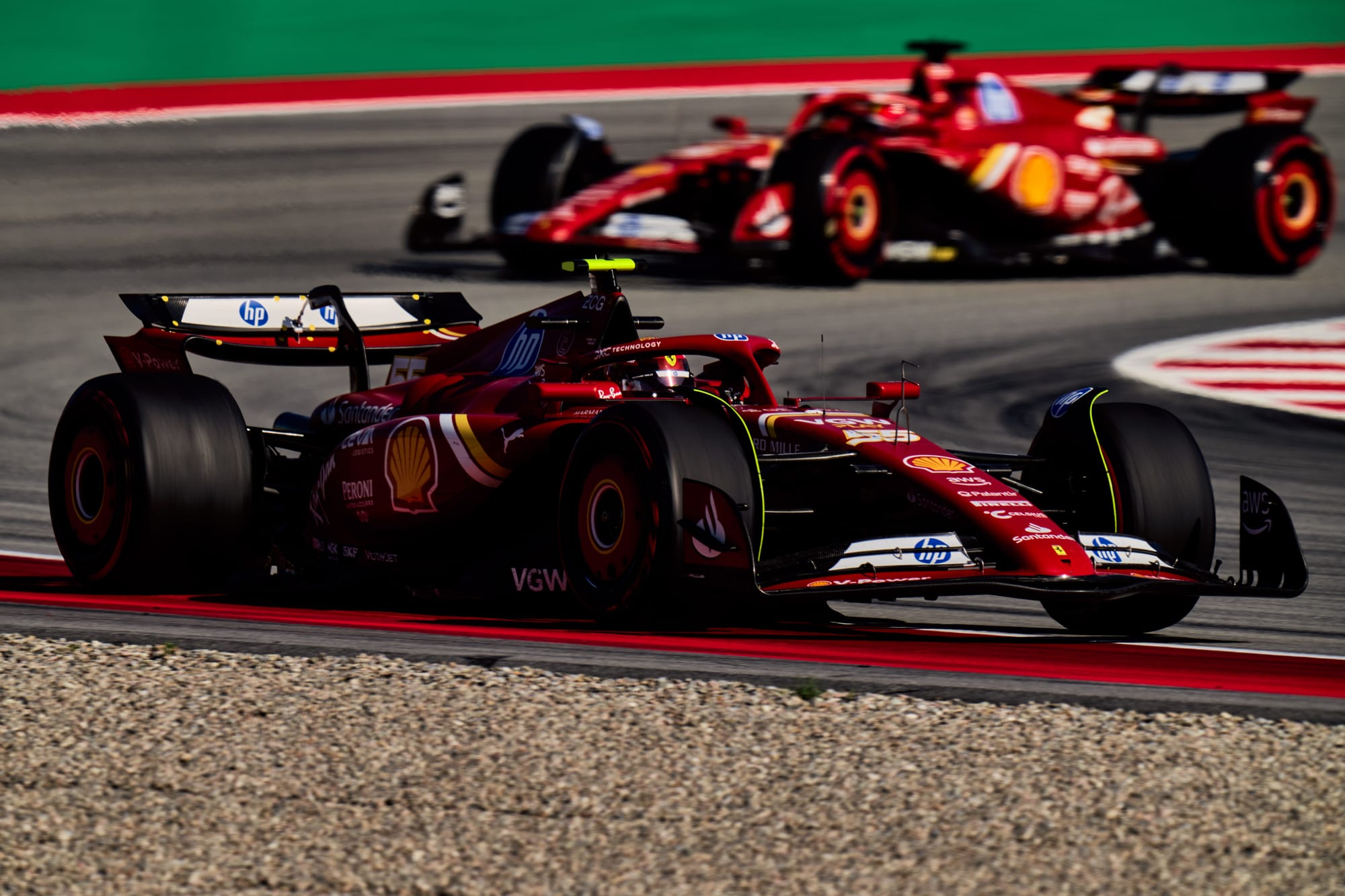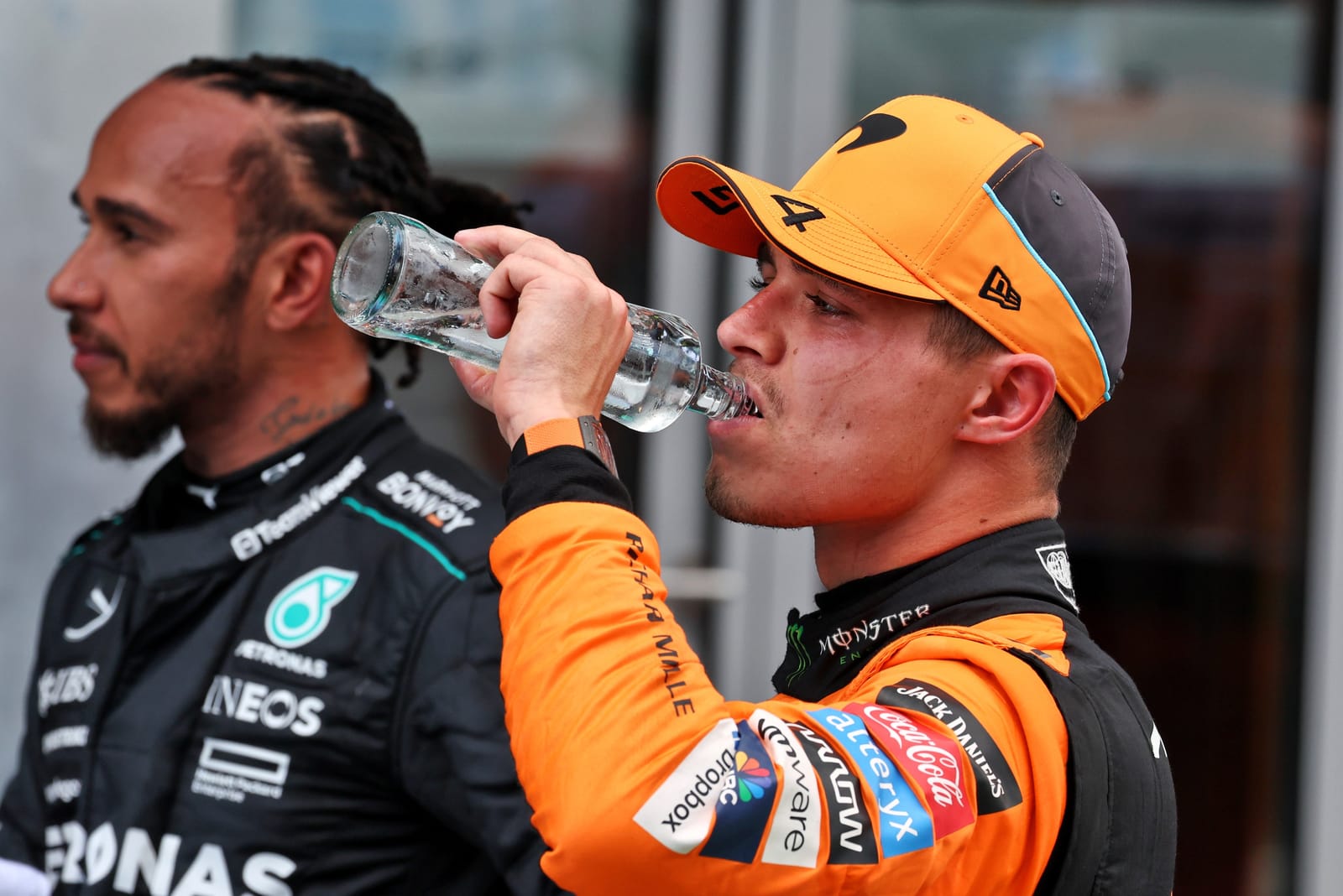

Ferrari began the 2024 Formula 1 season as Red Bull’s nearest challenger but that’s emphatically no longer the case.
Lando Norris and McLaren are the ones putting Max Verstappen under the most pressure right now, while Ferrari lacks the pace to be in that fight and is even looking vulnerable against Mercedes.
If you’re only as good as your last race, then Ferrari is now very much on its way to ending up as F1’s fourth-best team based on last weekend's Spanish Grand Prix.
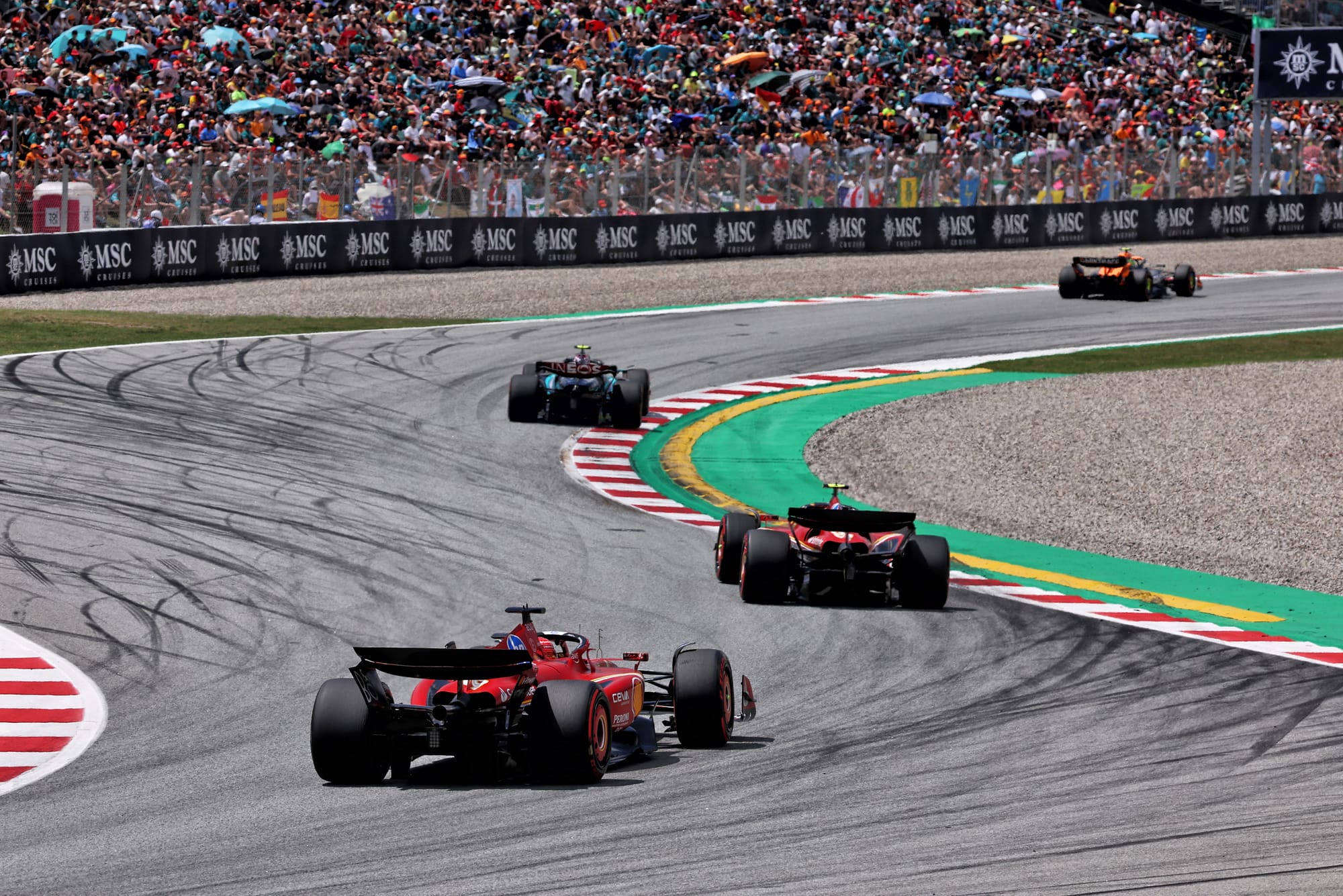
It’s still incredibly close, of course - the fight at the front of the grid has not been this intense at any stage since F1 adopted hybrid engines in 2014 - but the worrying thing for Ferrari is that it is too often falling the wrong side of those tiny but crucial margins.
After a disappointing Spanish GP, in which the Ferrari drivers collided with each other, engaged in a tense post-race war of words and finished more than 20 seconds behind the winner, there was a clear indication that Ferrari’s level of performance had not matched expectations.
Charles Leclerc was very clear in saying Ferrari had performed “not as expected” in Spain, and urged the team to respond as quickly as possible.
Carlos Sainz sounded similarly despondent on where Ferrari stands right now. He figured Ferrari should absolutely have been contending for pole position in Spain, not qualifying three and a half tenths away from McLaren and Red Bull. As he put it, that’s “a lot of laptime around Barcelona”.
Sainz - the pacesetter in final practice - expected to qualify within a tenth or a tenth and a half of those two cars, so clearly there was at least two tenths of performance missing that caught Ferrari by surprise.
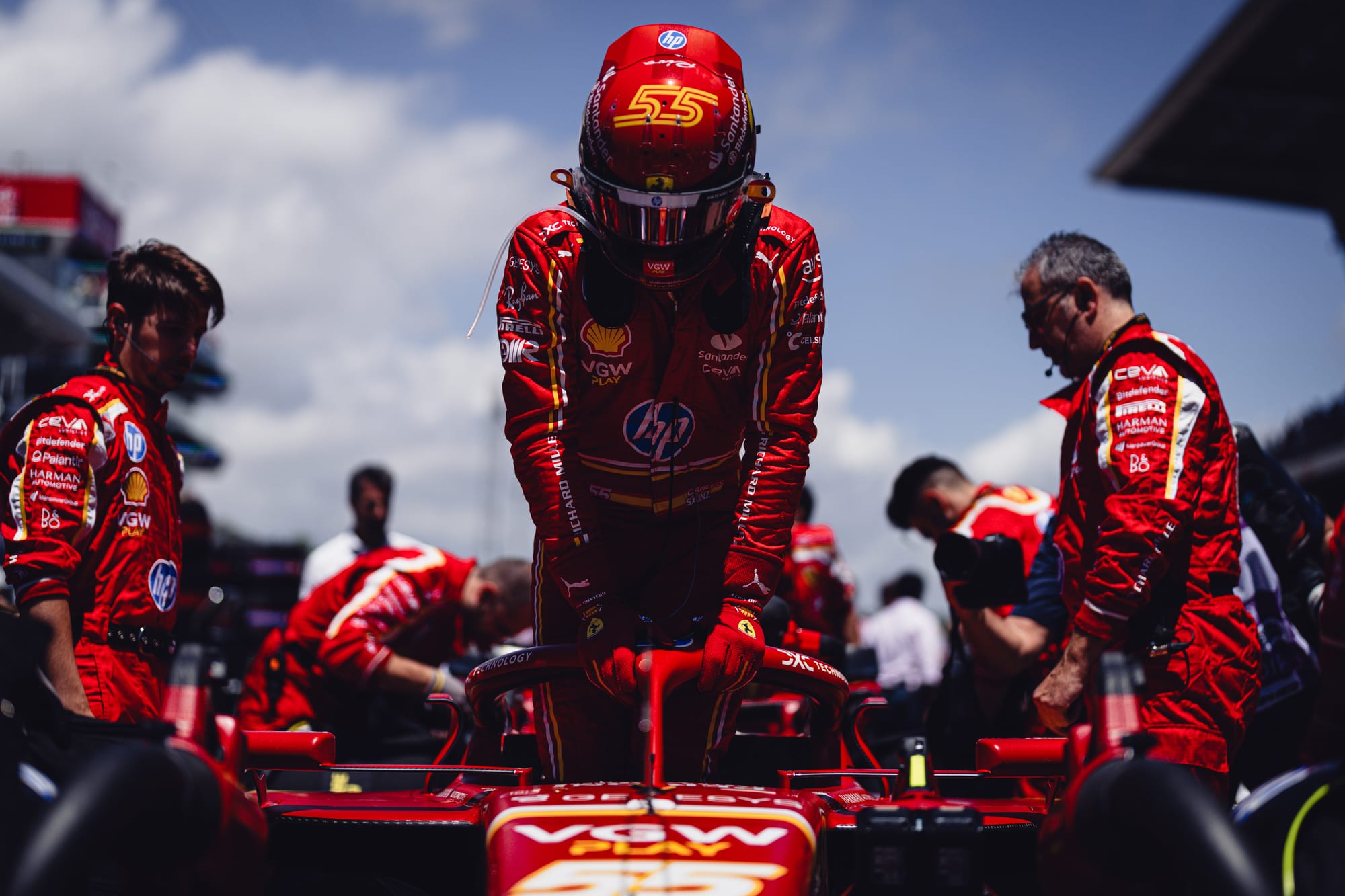
There is also a slight disconnect between how the drivers feel about where Ferrari stands and where Ferrari itself feels it stands.
Team boss Fred Vasseur, perhaps unsurprisingly, painted a more favourable picture. He pointed to the fact that five hundredths of a second would have put both Ferraris ahead of Mercedes on the grid - equivalent to what he called “a gust of wind” negatively affecting the car at the crucial moment - and that from there a race to the podium was much more likely, as was a smaller theoretical deficit to the leading cars.
Vasseur is clinging somewhat to the fact that Ferrari dominated the Monaco GP very recently, and that Mercedes were “14 seconds behind” Ferrari there so the performance profile among the top teams is still capable of wild swings.
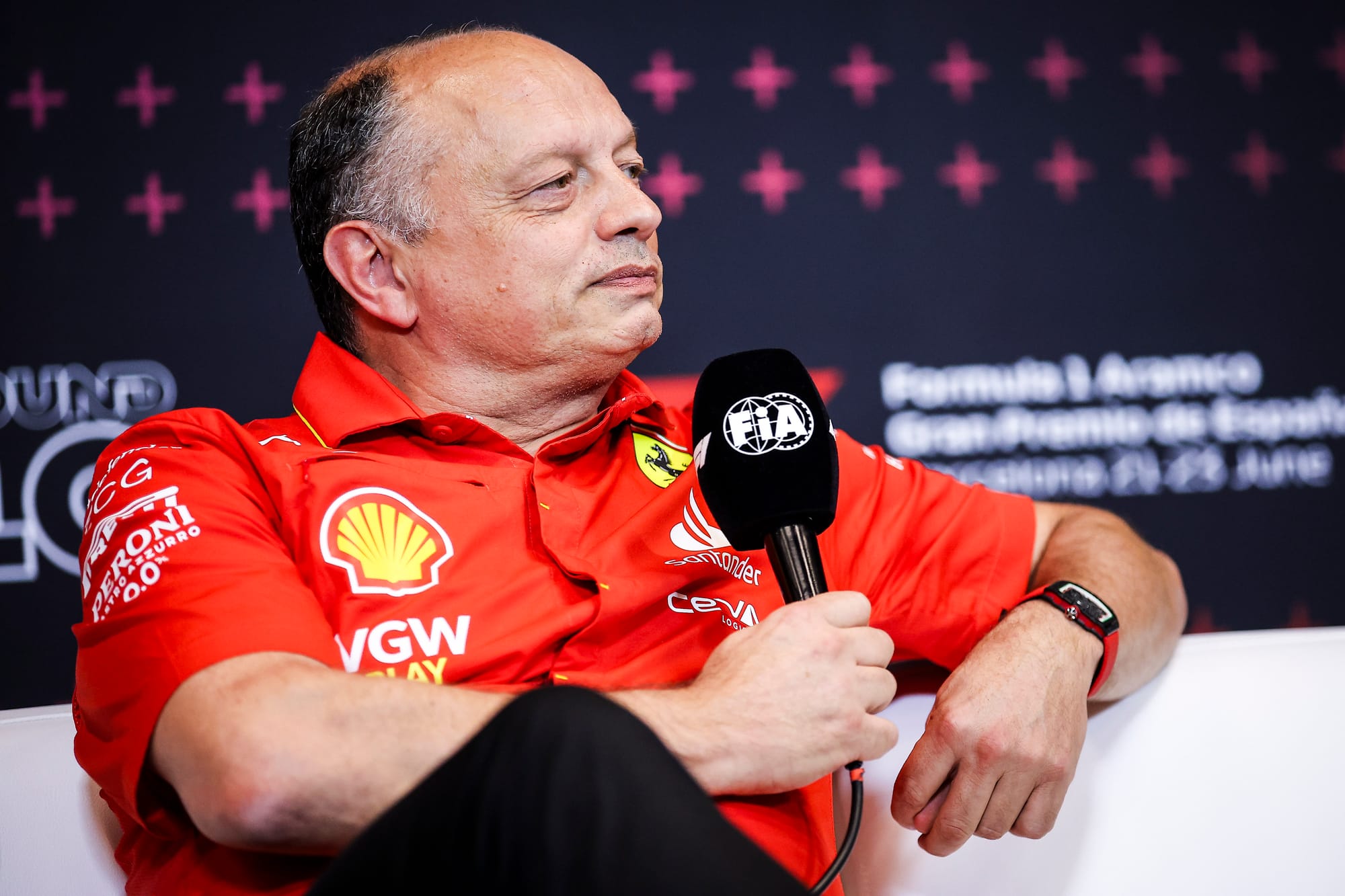
His argument is that the pattern of performance among the top teams in F1 right now is “not crystal clear” - but Ferrari’s best performance so far in 2024 has come at Monaco, which is the ultimate outlier circuit and so not something to be clinging to if you want to be considered a credible championship contender.
What is becoming clear is that Ferrari is losing ground in that tight battle at the front.
ARE FERRARI'S UPGRADES ENOUGH?
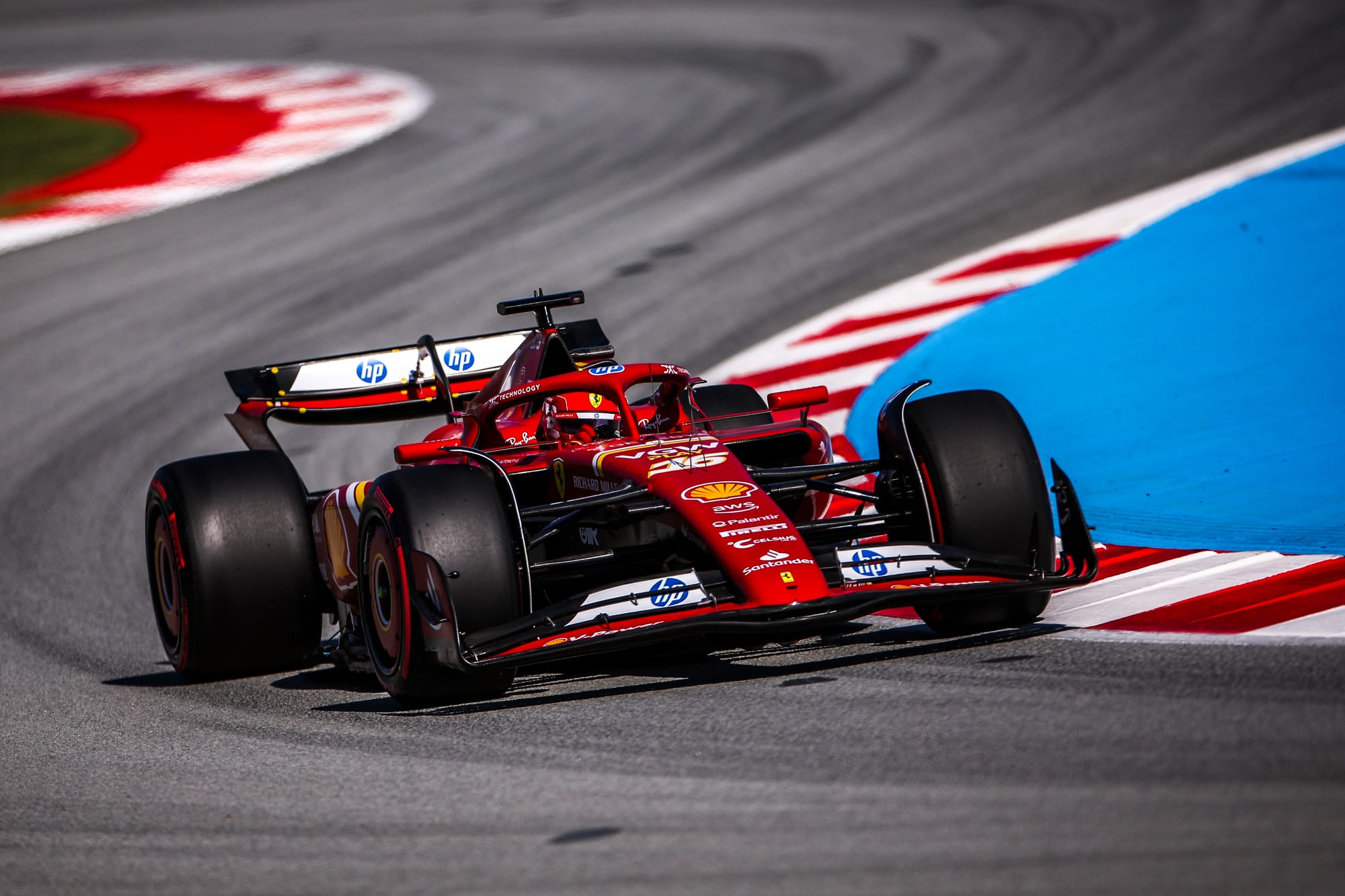
Ferrari brought a much-hyped upgrade to Imola that didn’t appear to make a huge difference in terms of where it stood relative to Red Bull, and certainly seemed much less impressive than what McLaren was able to do with its own car in that phase of the season.
At Barcelona, Ferrari introduced a further upgrade - focused on the rear wing, sidepods and floor - with the express aim of increasing downforce at the rear of the car and holding on to more of that downforce when the car is transitioning through corners.
Ferrari’s Jock Clear said the package had even been fast-tracked, so Ferrari could make use of the extra performance through the triple-header of races from Barcelona to Silverstone and perhaps steal a march on its rivals.
Clear described the upgrade as “incremental” - offering more downforce for less drag. An efficiency gain that “just wins everywhere”.
Both drivers were quite clear in saying those upgrades are bringing the performance gain expected - but the question is whether Ferrari is doing enough. F1 is always a relative game, so you can improve compared to yourself but that’s no good if others are progressing at a faster rate.
The current trend would suggest that, even if Red Bull is beginning to hit a bit of a development ceiling with these regulations - and that is creating some welcome convergence at the front of the grid - teams like McLaren and Mercedes are currently improving at a better rate than Ferrari is.
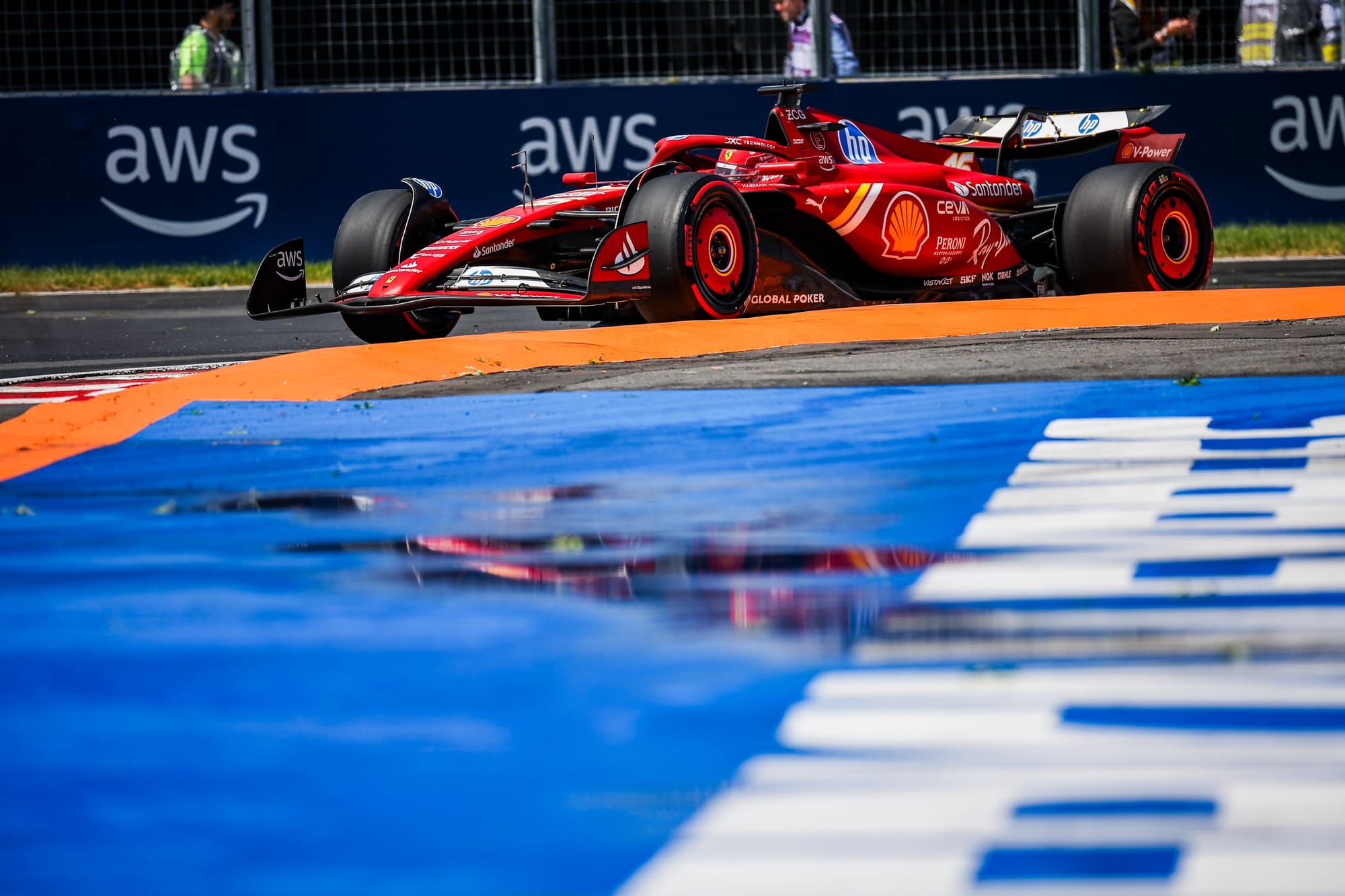
Canada was an absolute nightmare of execution from Ferrari - and in Spain Leclerc said Ferrari was performing “not as expected”, despite fast-tracking those updated parts.
Vasseur looks at it from the other end of the spectrum, pointing out that Ferrari’s incremental developments so far in 2024 are critical in preventing a competitive slump. In his words, if you don’t bring an update you will “jump backwards”.
But that’s a curiously defensive approach to the competition, and even if he’s right to say Ferrari might get more out of its car with a better understanding of the new package applied for the coming races, it glosses over the fact Ferrari appears to be slipping back regardless of any incremental gains it's making with its car.
McLAREN HAS OVERTAKEN FERRARI
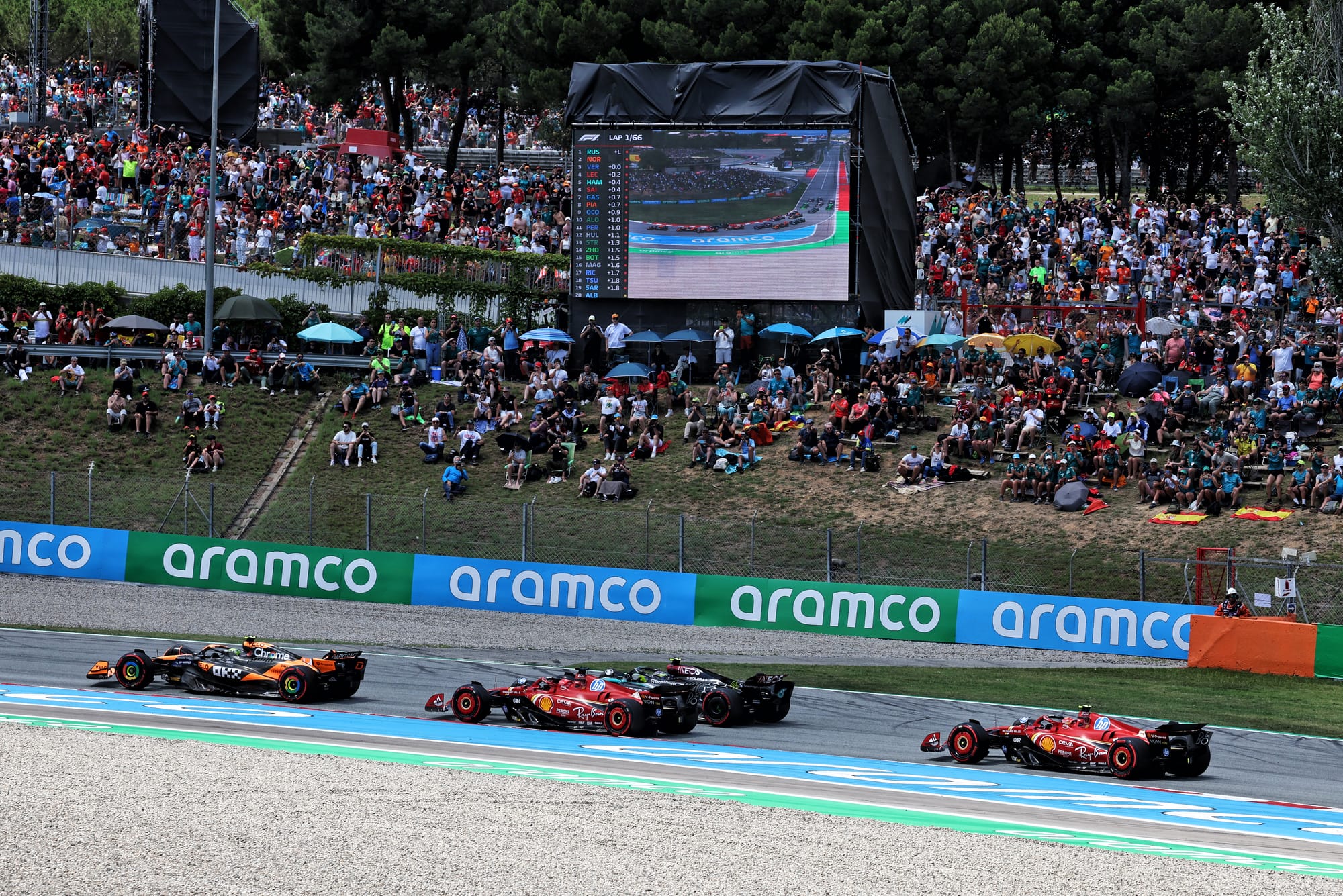
It’s legitimate to ask whether Ferrari’s frame of reference for what’s still possible under these regulations is deficient.
There will always be fluctuations in performance from race to race in F1. All cars have certain traits that suit some circuits better than others, and then it comes down to how you deliver on a given weekend in terms of execution and maximising your potential.
But if you want to be in the championship fight, and maximise your potential across a full season, you need to be in the mix on the widest range of circuits possible.
Part of the reason for McLaren’s incredible surge forward is the fact the team has overhauled methodologies that in the past would have warned it against pursuing certain development directions that are now proving fruitful.
Mercedes’ James Allison has spoken about how the limitations for development in F1 now are fundamentally different to before. The ground imposes a hard limit for everyone to work towards, with an exponential gain in downforce available the lower to the track surface you can consistently run your car.
But venturing into that territory is creating challenging balance limitations for all teams, which is why flexibility in the front wings is now becoming a major topic.
If you can design your front wing to stall at high-speed, then reattach the airflow predictably under deceleration, you can achieve better front-end grip for slower-speed corners without compromising rear stability at high speed by otherwise having a front wing that has become overpowered running in ground effect.
Equally, you can overpower the rear end of your car by venturing too far into that exponential curve of downforce generation from the floor and create a car that bounces itself to bits and won’t turn properly into anything but the gentlest or most progressive of high-speed turns.
Trying to maintain the stability of that aerodynamic profile through a full range of corner types is incredibly difficult - and the level of mechanical stiffness required to control that aerodynamic platform creates significant problems with ride over bumps and kerbs.
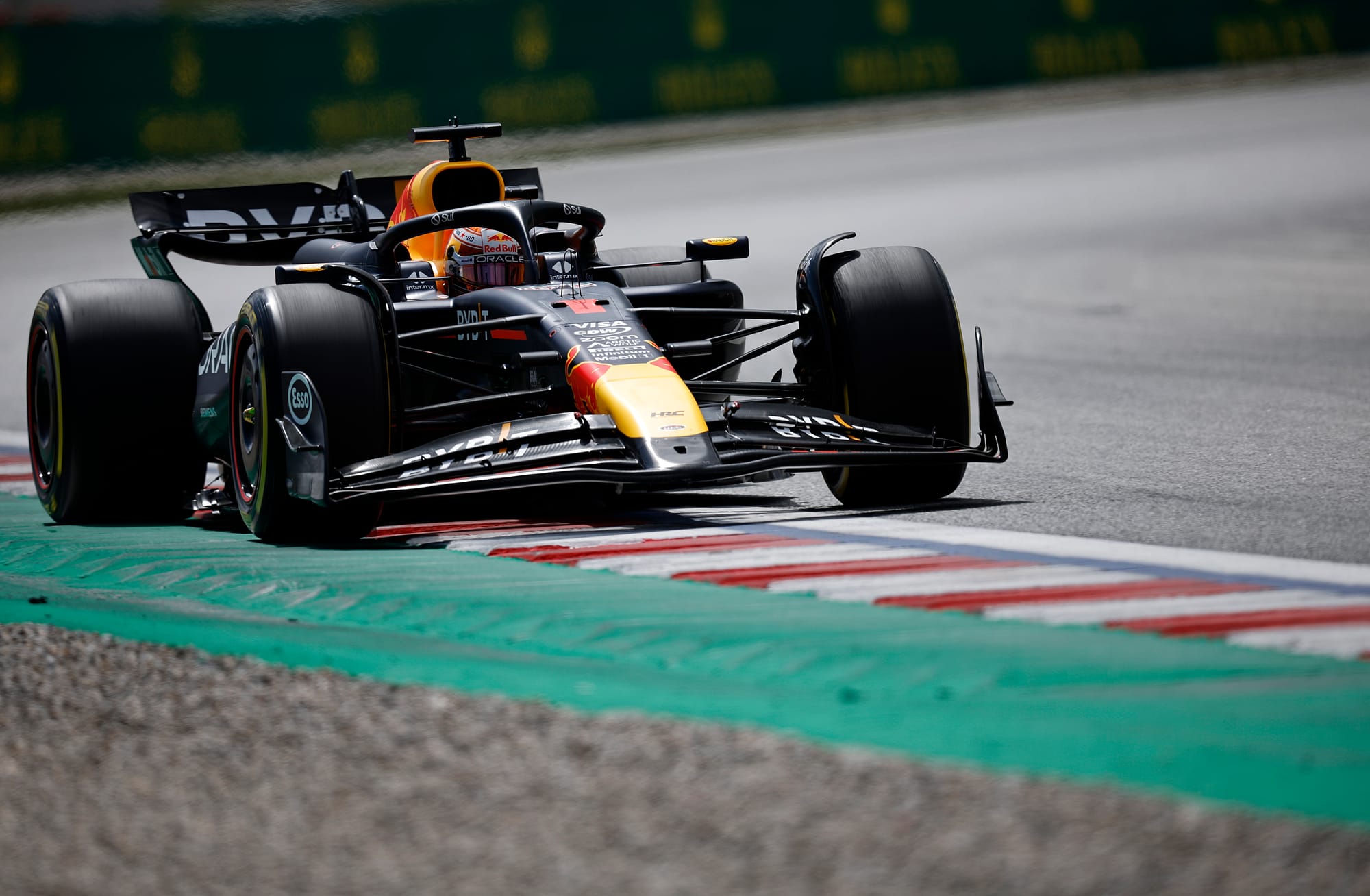
What we see at the front of F1 right now is one team - Red Bull - that is incredibly good at generating performance at high speed with high efficiency (low drag) but then struggles when the circuit is excessively bumpy, because it has to come out of its ideal ride height range to cope with that challenge, and when it does it loses downforce.
Mercedes has finally understood how to achieve a reasonable balance of performance at low speed and high speed, but at a slight cost to the level of peak downforce it can produce at either end of that spectrum. The revised and more flexible front wing introduced for Monaco and Canada was a significant step in balancing out the traits of a car that previously was biased too far towards either end of that spectrum.
Ferrari has worked hard to make its car less peaky and therefore easier to drive, which has presumably involved a similar journey in trying not to be too greedy in chasing peak downforce from the lower ride height range and sacrificing some of that theoretical gain for greater stability and driveability.
That’s given Ferrari a clear improvement overall from 2023 to 2024, but what it still retains is a tendency to be overpowered at low-speed circuits with shorter corners, because it has greater mechanical flexibility than the other top cars, at the expense of some fidelity in its platform control at higher speeds.
It also has a power unit configuration that works much better at powering the car quickly out of low-speed corners, but at the expense of top-end performance at the end of long straights.
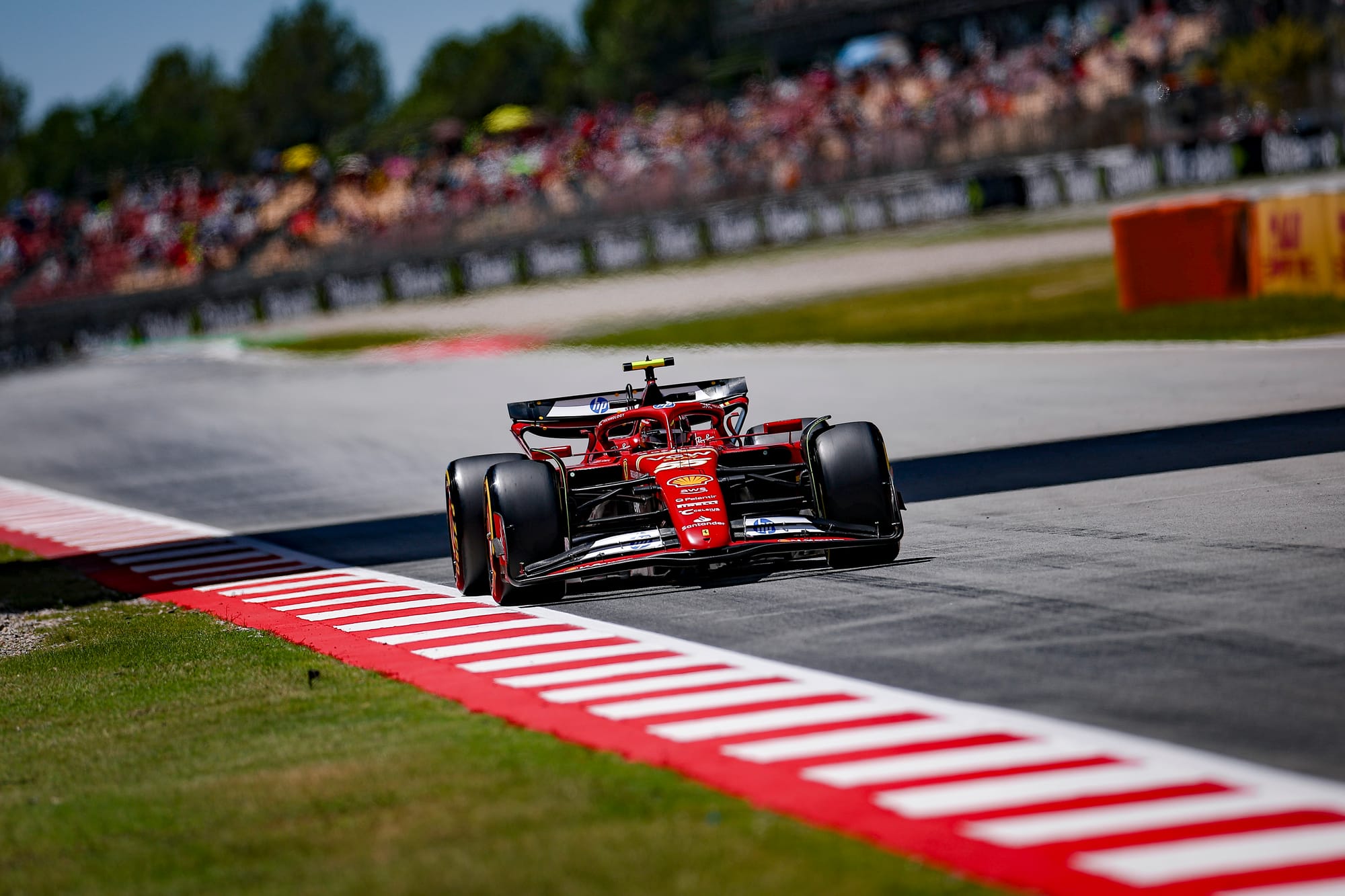
We’ve seen this manifest in Ferrari being relatively less competitive on circuits with lots of long corners and high-speed demands, such as Jeddah, Suzuka, Shanghai and Barcelona. But it's had much stronger performances at places like Bahrain, Melbourne and especially Monaco.
And then a reasonable but not exceptional level of performance at places like Imola and Miami - where the bumps, kerbs and short corners are helpful but the long, full-throttle faster sections are not.
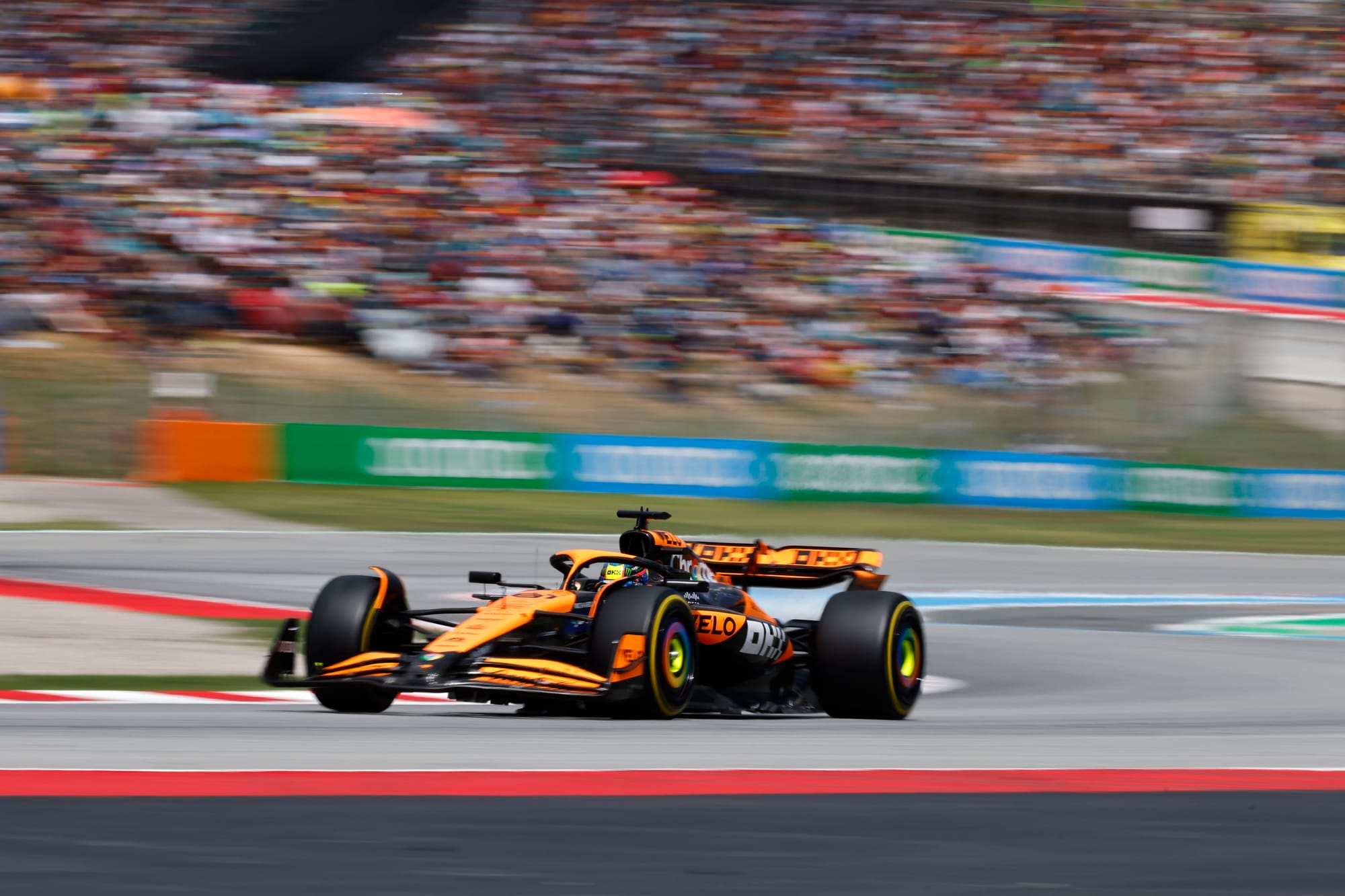
McLaren, though, appears to have created a genuine all-rounder.
A car with not-quite-Red Bull levels of potent high-speed performance, at a cost of some extra drag and absolute straightline speed, but one which now also has not-quite-Ferrari levels of mechanical dexterity and flexibility but enough to be reasonably strong at low speed and over bumps and kerbs. Plus a car with a wider operating window overall than Mercedes.
FERRARI: KING OF THE OUTLIERS
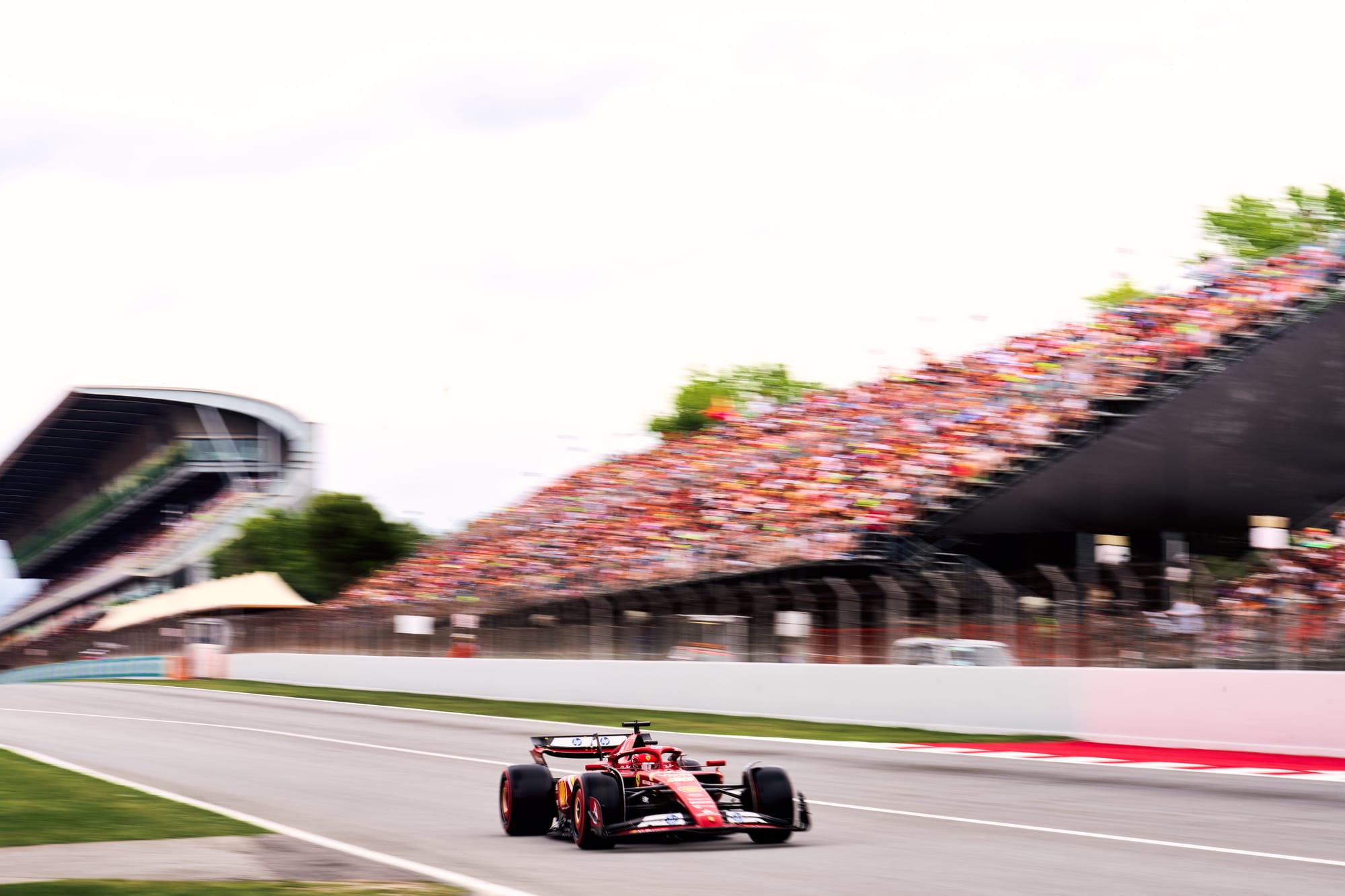
What Ferrari appears to have is the car that is currently king of the outliers - incredibly potent on circuits with a very specific and narrow performance profile, like Monaco, but carrying a clear (but by no means drastic) performance deficit on conventional tracks.
Vasseur appears happy to accept that compromise if it means Ferrari wins in places like Monaco (already achieved), Baku and Singapore - a haul he suggested would be “not that bad”.
He was keen to emphasise after the Spanish GP the fact that four different cars have sat on pole position at each of the past four races, and so determining a clear pecking order is impossible.
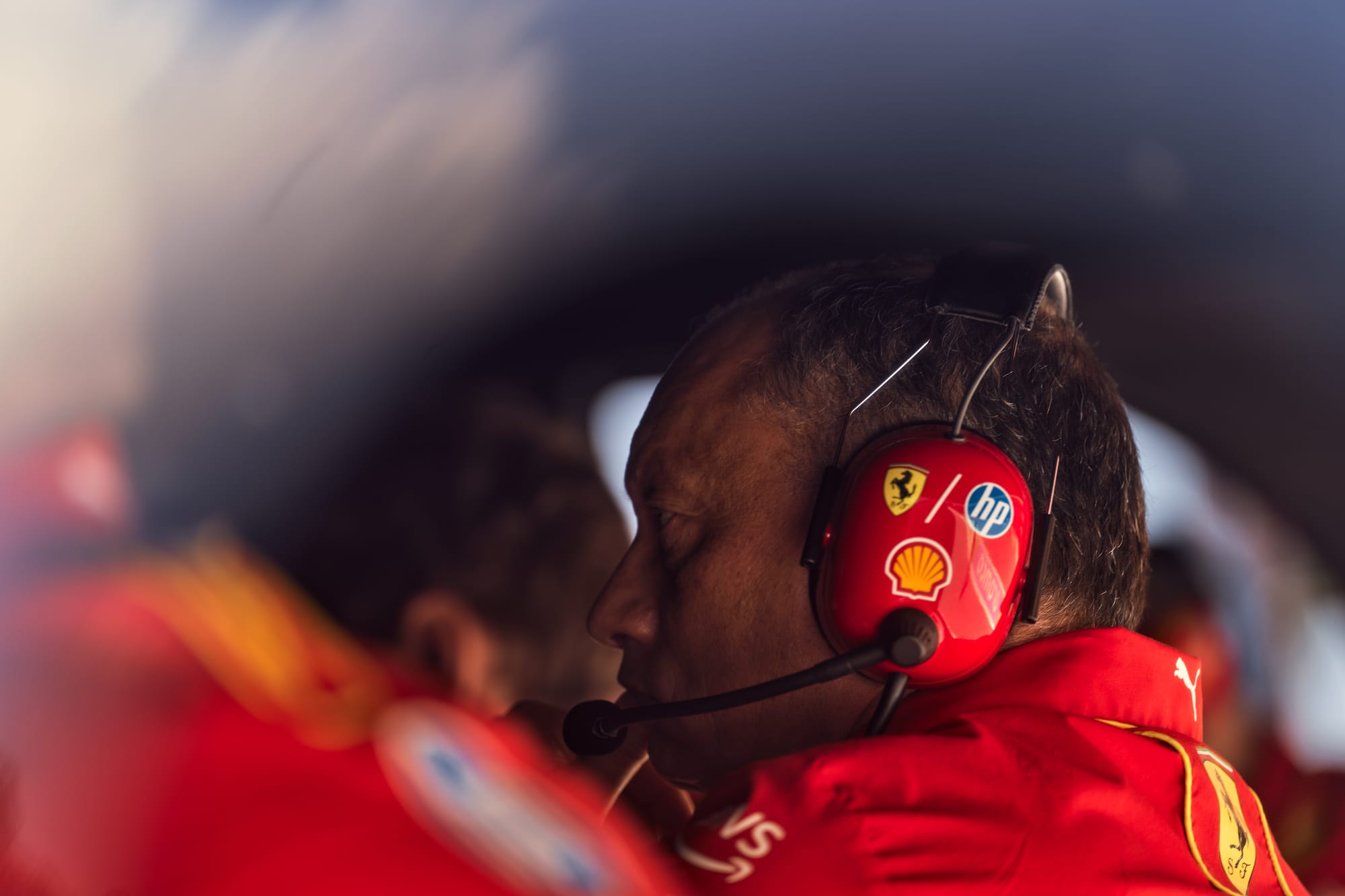
He also feels strongly that the convergence we’re seeing at the front of the grid places increased emphasis on the smallest variations of circuit characteristics suiting specific cars, and then each team executing a given session to the best of its ability, else the tiniest bit of underperformance be seized upon.
Ferrari’s slight lack of control of the aero platform at high speed, full grip and maximum power around Barcelona, along with being badly disposed to long-duration corners, created a bouncing limitation through the fastest turns and what appeared to be an understeer limitation through the slowest ones.
It probably had to run a bit higher than is ideal on ride height to gain some control and therefore couldn’t carry the same speed through the full range of corners as the McLaren and Red Bull could. Carrying speed through the final two fast right-handers was a particular limitation for Ferrari in Spain.
It could also be that the latest upgrades have overpowered the rear end of the car a bit, pushing Ferrari into bouncing territory and creating an imbalance that resulted in some speed-sapping understeer that couldn’t quite be dialled out this time.

Sainz said Ferrari’s “hope” is that Barcelona simply turns out to be “just a bogey track for us”. Ferrari was certainly awful around this track in 2023, and finishing fifth and sixth in 2024 definitely represented a year-on-year improvement.
It’s Vasseur’s modus operandi to call for calm after each race and to not get carried away with every overachievement or underachievement Ferrari does - but it does seem McLaren’s development and understanding under these rules has overtaken Ferrari’s.
And so Ferrari is in danger of slipping back even though it too is incrementally improving. As Sainz said: “It seems like the others are just developing more.”
As Sainz himself has identified, McLaren and Red Bull still look a clear step ahead over a greater range of corner profiles and circuit types than Ferrari can make up for currently with its inherent strengths.
And it’s the fact Ferrari has apparently now squandered its advantageous position over McLaren at the start of 2024 that perhaps should be setting alarm bells ringing in Maranello.
